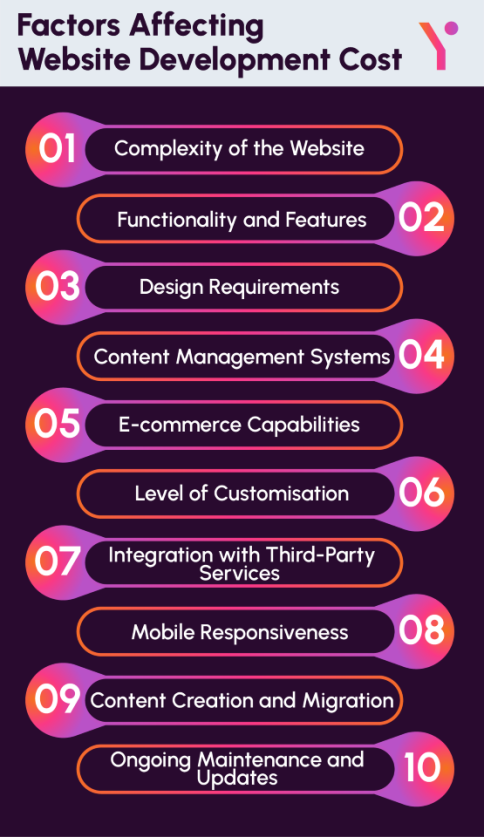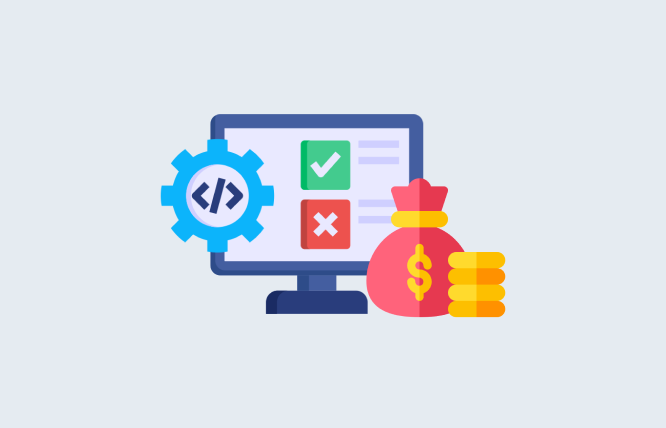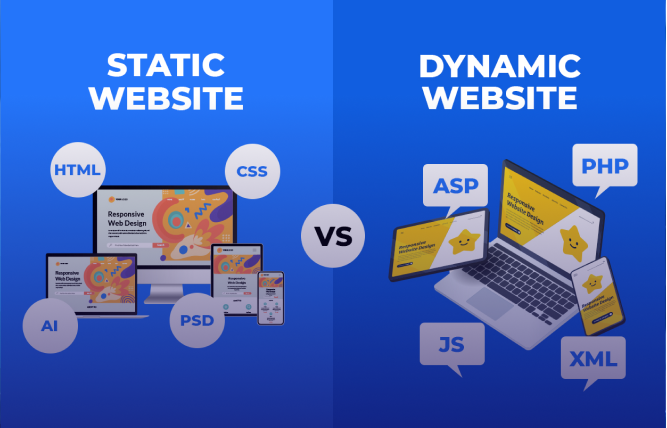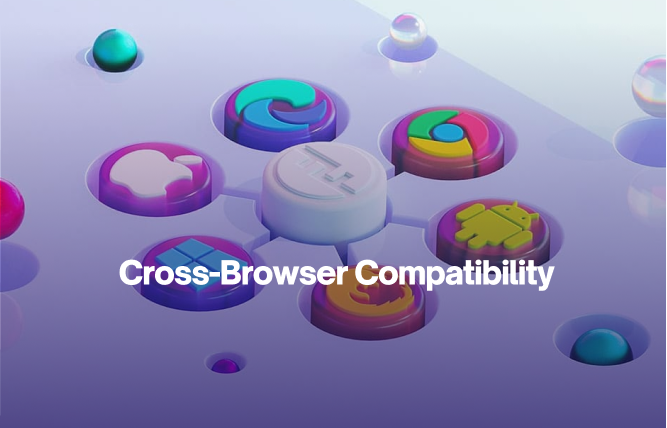Introduction
This blog will tell you how much does it cost to develop an e-commerce app. We’ll unveil clever strategies for ensuring low cost mobile app development, including exploring platform choices and features to focus on when developing an e-commerce app.
Businesses worldwide are looking towards creating a website for their brand. A business website can create a huge impact and drive potential customers to the organisation. Studies have shown that your website can make the difference between improving your customer base or ruining your company reputation.
According to surveys, 88% of online consumers are less likely to return to a site after a bad experience. Furthermore, 75% of consumers admit to making judgements on a company’s credibility based on the company’s website design.
It is clear to see that websites are an integral part, which begs the question, how much does it cost to develop a website. In this article we will discuss the costing that goes behind developing a website.
Factors Affecting How Much Does it Cost to Develop a Website
The cost of website development can vary significantly based on several factors. These include the complexity of the website, its functionality and features, design requirements, content management systems (CMS), e-commerce capabilities, and professional web development services. Let’s discuss each factor in detail:

Complexity of the Website
The complexity of the website plays a significant role in determining development costs. Basic websites with standard features and functionality are generally less expensive to build compared to complex websites with custom features, intricate designs, and advanced functionalities.
Functionality and Features
The specific functionalities and features required for the website can impact development costs. Basic informational websites may have lower costs, while e-commerce platforms, booking systems, membership portals, and other advanced features can increase development expenses.
Design Requirements
The design complexity and customisation requirements of the website contribute to development costs. Custom-designed websites with unique layouts, branding elements, graphics, animations, and interactive components typically incur higher design and development expenses.
Content Management Systems (CMS)
The choice of CMS platform affects development costs. Open-source CMS platforms like WordPress, Joomla, and Drupal offer cost-effective solutions with extensive customisation options. However, custom-built CMS or proprietary platforms may involve higher development costs due to customisation and licensing fees.
E-commerce Capabilities
Websites that include e-commerce functionality for online selling require additional development work, such as product listings, shopping carts, payment gateways, and order management systems. The complexity of the e-commerce infrastructure influences development costs.
Level of Customisation
The level of customisation needed for the website influences costs. Custom-designed websites tailored to specific business requirements incur higher development expenses compared to using pre-made templates or themes with limited customisation options.
Integration with Third-Party Services
Websites that integrate with third-party services, such as payment gateways, CRM systems, email marketing tools, and social media platforms, may require additional development work, leading to increased costs.
Mobile Responsiveness
Ensuring mobile responsiveness and compatibility across different devices and screen sizes adds to development costs. Mobile optimisation involves creating responsive designs, adaptive layouts, and optimising user experience for mobile users.
Content Creation and Migration
The creation and migration of content, including text, images, videos, and other multimedia elements, contribute to development costs. Content development, optimisation, and migration from existing websites or platforms require time and resources.
Ongoing Maintenance and Updates
Consideration of ongoing maintenance, updates, and support is essential for estimating the total cost of website development. Budgeting for regular maintenance, security updates, software upgrades, and technical support ensures the long-term sustainability of the website.
Cost Ranges for Website Development
Website development costs can range from a few hundred dollars for a basic website template to several thousand or even tens of thousands of dollars for a custom-designed, feature-rich website which means there is no simple answer to how much does it cost to develop a website. Small businesses and startups may opt for cost-effective solutions such as website builders or pre-made templates, while larger enterprises may invest in custom website design and development.
Cost-Effective Strategies for Website Development
To minimise website development costs and figuring out how much does it cost to develop a website, businesses can consider several cost-effective strategies.
Clear Planning and Requirement Definition
Start by defining clear objectives, goals, and requirements for your website. A detailed plan helps streamline the development process, reducing the likelihood of scope creep and unnecessary expenses.
Choose the Right Development Approach
Consider the most suitable development approach based on your budget and requirements. While custom development offers flexibility and scalability, using pre-built templates or themes can significantly reduce costs and development time.
Open-Source Content Management Systems (CMS)
Opt for open-source CMS platforms like WordPress, Joomla, or Drupal, which offer robust features, customisation options, and a vast library of plugins and themes at no cost. These platforms eliminate the need for custom development from scratch, saving both time and money.
Utilise Website Builders
Explore website builders like Wix, Squarespace, or Shopify, which provide user-friendly interfaces and pre-designed templates for creating professional-looking websites without extensive coding knowledge. Website builders often offer affordable subscription plans with hosting included.
Outsource Development Offshore
Consider outsourcing website development to offshore or freelance developers in countries with lower labor costs. Outsourcing can significantly reduce development expenses while leveraging skilled talent and resources.
Agile Development Methodology
Adopt agile development methodologies like Scrum or Kanban to improve project management efficiency, increase collaboration, and deliver incremental updates. Agile development allows for flexibility in responding to changes and prioritising features based on budget constraints.
Focus on Essential Features First
Prioritise the development of essential features and functionalities that align with your business goals. Start with a minimum viable product (MVP) and gradually add more advanced features based on user feedback and budget availability.
Reuse Existing Assets
Leverage existing assets, such as content, images, branding materials, and integrations, to reduce development time and costs. Reusing assets from previous websites or marketing collateral can streamline the development process and lower expenses.
Optimise Performance and Hosting Costs
Implement performance optimisation techniques to ensure fast loading times and efficient use of resources. Choose reliable and cost-effective hosting providers that offer scalable plans based on your website’s traffic and resource requirements.
Invest in Training and Documentation
Provide training and documentation for internal teams to manage and update the website independently after the initial development phase. Empowering staff with the necessary skills reduces reliance on external developers and ongoing maintenance costs.
Challenges in Website Development
Despite the benefits of website development, businesses may encounter various challenges along the way. These challenges can include budget constraints, technical complexities, scope creep, communication issues with web and application developers, and ensuring compatibility with different devices and browsers. These all impact the answer to how much does it cost to develop a website.
Scope Creep
One of the most significant challenges in website development is scope creep, where the project’s scope gradually expands beyond the initial requirements. This can result from unclear project specifications, changing business needs, or client requests for additional features. Scope creep can lead to project delays, increased costs, and frustration among stakeholders.
Budget Constraint
Limited budgets often pose a challenge in website development, particularly for small businesses and startups. Balancing the desired features and functionalities with the available budget requires careful planning and prioritisation. Cost-effective solutions and efficient resource allocation are essential to overcome budget constraints.
Timeline Pressures
Meeting project deadlines and timelines is another challenge in website development. Delays can occur due to various reasons, such as unexpected technical issues, scope changes, resource constraints, or dependencies on third-party vendors. Effective project management and communication are crucial for adhering to timelines and minimising delays.
Technical Complexity
Website development projects can be technically complex, especially when implementing advanced features, integrations, or custom functionalities. Technical challenges may arise due to compatibility issues, scalability concerns, performance optimisation, security vulnerabilities, or lack of expertise in emerging technologies. Addressing these challenges requires experienced developers and thorough testing.
User Experience (UX) Design
Designing an intuitive and engaging user experience is essential for website success. However, achieving an optimal UX design requires a deep understanding of user preferences, behaviour patterns, and usability principles. Balancing aesthetics with functionality while catering to diverse user needs can be challenging and may require iterative design iterations.
Cross-Browser and Device Compatibility
Ensuring consistent performance and user experience across different web browsers, devices, and screen sizes is a significant challenge in website development. Compatibility issues may arise due to differences in browser rendering engines, device capabilities, or responsive design implementation. Testing websites on various platforms and conducting cross-browser compatibility checks are essential to address this challenge.
Content Management
Managing website content effectively, especially for large-scale or content-rich websites, can be challenging. Content updates, revisions, version control, and maintaining consistency across pages require robust content management systems (CMS) and workflows. Training content editors and implementing content governance policies are essential for smooth content management.
Security Vulnerabilities
Website security is a critical concern, given the increasing frequency and sophistication of cyber threats. Protecting sensitive data, preventing unauthorised access, and mitigating security vulnerabilities require robust security measures, such as SSL encryption, firewalls, regular security audits, and compliance with industry standards (e.g., GDPR, PCI DSS).
Search Engine Optimisation (SEO)
Ensuring high visibility and ranking in search engine results is crucial for driving organic traffic to the website. However, optimising websites for SEO involves addressing technical SEO issues, creating quality content, optimising metadata, building backlinks, and staying updated with search engine algorithms. Achieving and maintaining SEO success requires ongoing efforts and monitoring.
Client Communication and Expectations
Effective communication with clients throughout the website development process is essential for managing expectations, addressing feedback, and ensuring client satisfaction. Misalignment of expectations, poor communication, or lack of clarity can lead to misunderstandings, project delays, and dissatisfaction. Regular progress updates, milestone reviews, and transparent communication channels help mitigate this challenge.
Future Trends and Considerations
Looking ahead, several emerging trends and considerations are shaping the landscape of website development. This includes the growing importance of mobile responsiveness and user experience (UX) design, the rise of voice search and AI-powered chatbots, the increasing demand for cybersecurity measures, and the impact of emerging technologies such as augmented reality (AR) and virtual reality (VR) on website design and development.
All these factors will have a huge impact on how much does it cost to develop a website in the coming years but businesses will benefit from their website and will be seen as a safe investment.
Conclusion
In conclusion, the answer to how much does it cost to develop a website can vary widely depending on various factors, but businesses can adopt cost-effective strategies to optimise their investment. By understanding the key factors influencing costs, exploring case studies and examples, addressing challenges, and considering future trends, businesses can develop websites that effectively meet their objectives within their budget constraints.
If you are looking for an expertly developed website for your organisation, FuturByte has got you covered. Our team of developers will understand all your requirements and offer website optimisation services as well as, custom website solutions.
Got an Exciting development Idea? We've got the Skills!
Let's Discuss Your Web Development Project!

Frequently Asked Questions
The cost of web development varies based on several factors, including the complexity of the website, required features and functionalities, custom design elements, integration with third-party services, e-commerce functionality, content management system (CMS) selection, responsive design for mobile compatibility, and SEO optimization. Each of these factors contributes to the overall scope and complexity of the project, influencing the final cost.
In addition to the initial development costs, there are ongoing expenses to consider, such as hosting fees, domain registration and renewal fees, maintenance and updates, content updates, SEO, marketing efforts, and licensing fees for premium themes or plugins. These ongoing costs are essential for ensuring the website’s security, performance, and relevance over time.
To reduce web development costs, consider prioritizing features based on essential requirements, choosing a reliable and cost-effective CMS platform, opting for pre-designed templates or themes instead of custom design, considering phased development with essential features first, using open-source software and plugins, and negotiating pricing with development agencies.
Hidden costs in web development may arise from additional features or changes requested after the project has started, technical challenges or unforeseen issues during development, ongoing maintenance and support costs post-launch, scaling and infrastructure upgrades, and compliance with legal regulations such as GDPR or accessibility standards.
Transparency in web development costs is essential for effective budget management. To achieve this, clearly define project requirements and expectations, request detailed project proposals and cost breakdowns, discuss potential cost implications for changes or additional features, regularly review project progress and budget status, and maintain open communication channels with the development team.
Have questions or feedback?
Get in touch with us and we‘l get back to you and help as soon as we can!




